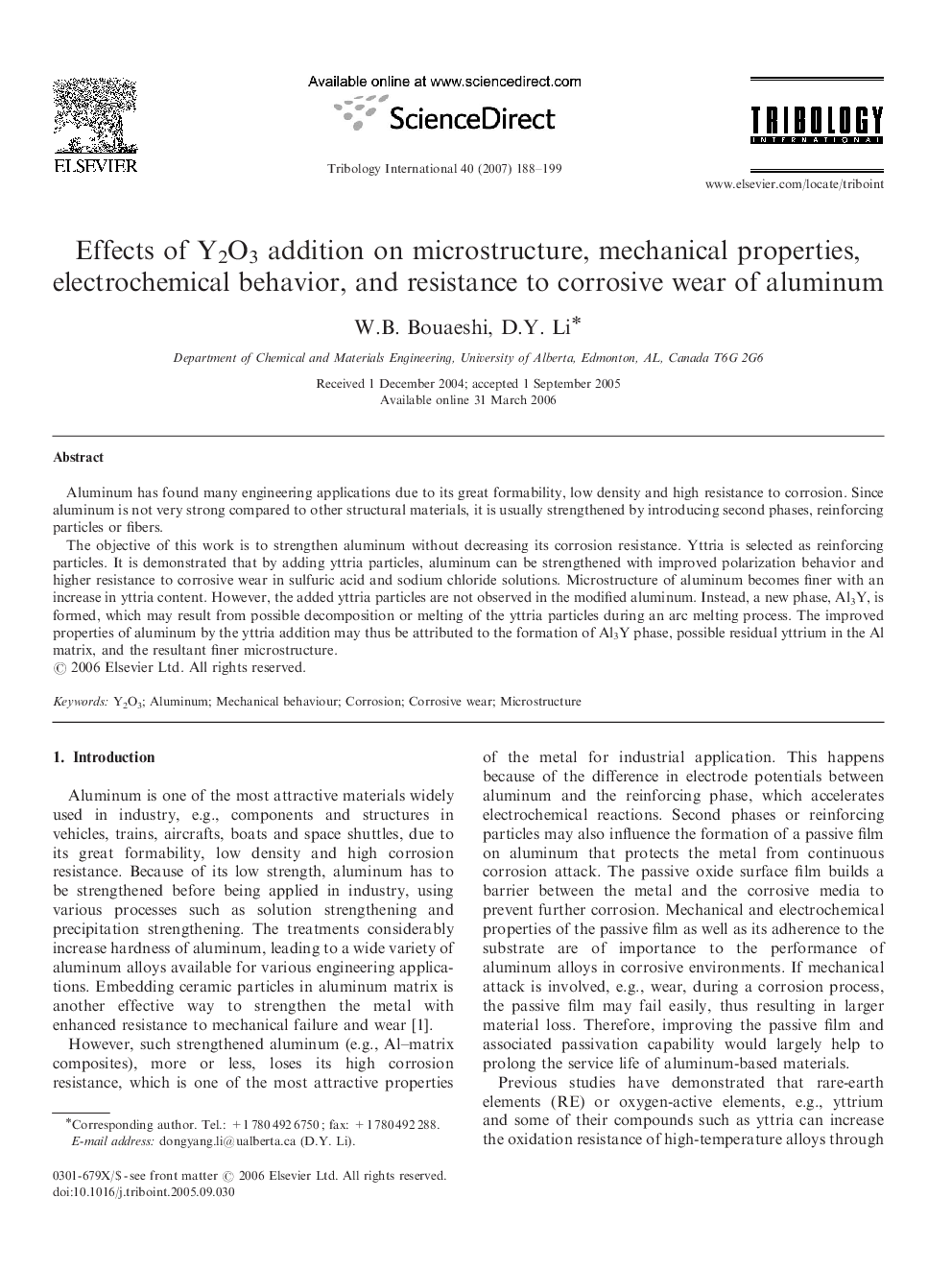| Article ID | Journal | Published Year | Pages | File Type |
|---|---|---|---|---|
| 616677 | Tribology International | 2007 | 12 Pages |
Aluminum has found many engineering applications due to its great formability, low density and high resistance to corrosion. Since aluminum is not very strong compared to other structural materials, it is usually strengthened by introducing second phases, reinforcing particles or fibers.The objective of this work is to strengthen aluminum without decreasing its corrosion resistance. Yttria is selected as reinforcing particles. It is demonstrated that by adding yttria particles, aluminum can be strengthened with improved polarization behavior and higher resistance to corrosive wear in sulfuric acid and sodium chloride solutions. Microstructure of aluminum becomes finer with an increase in yttria content. However, the added yttria particles are not observed in the modified aluminum. Instead, a new phase, Al3Y, is formed, which may result from possible decomposition or melting of the yttria particles during an arc melting process. The improved properties of aluminum by the yttria addition may thus be attributed to the formation of Al3Y phase, possible residual yttrium in the Al matrix, and the resultant finer microstructure.
